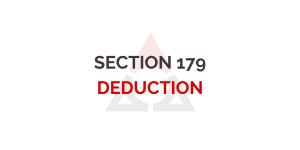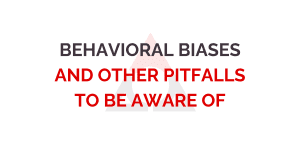What is Qualified Business Income?
The qualified business income (or QBI) tax deduction allows eligible business owners to deduct up to 20 percent of their qualifying business income from their income taxes.
To qualify, total taxable income must be below the following thresholds for 2024:
- $191,950 for single filers
- $383,900 for joint filers
If your income is above those thresholds, you may still qualify for a full or phased out deduction based on the nature of your business. If your business is a specified service trade or business (SSTB) you may be eligible for a phased out deduction subject to the following thresholds:
- $241,950 for single filers
- $483,900 for joint filers
Once above the qualification thresholds, determining whether your business is eligible can be complicated. The IRS provides a detailed FAQ page to help determine whether you would qualify for a full or partial deduction.
Who Qualifies for the Qualified Business Income Tax Deduction?
As a change to the tax code following the Tax Cuts and Jobs Act, the qualified business income deduction, also known as a 199A deduction, was designed to provide a tax cut to business structures with “pass through income” that would not benefit by the corporate tax rate cut.
Entities that are eligible for the deduction include:
- Sole Proprietorships
- Partnerships
- S Corporations
- Limited Liability Companies (LLCs)
How is Qualified Business Income Calculated?
According to the IRS, qualified business income is the net amount of qualified items of income, gain, deduction, and loss from any qualified business or trade. This includes:
- Deductible part of self-employment tax
- Self employed health insurance
- Deductions for contributions to qualified retirement plans
- Unreimbursed partnership expenses
- Business interest expenses
The following items are excluded from qualified business income:
- Wage income
- Capital gains and losses
- Dividends
- Interest Income
- Reasonable compensation from an S Corp
- Guaranteed payments from a partnership
The QBI deduction calculation depends on whether you are above or below the phaseout threshold and whether you operate a SSTB. For individuals under the threshold, a 20 percent deduction of qualifying business income can be applied. Those above the threshold will be subject to additional tests to determine the amount of their phaseout.
Planning to Maximize the Qualified Business Income Deduction
If you are near the income threshold and operate an SSTB business, it may be beneficial to find ways to lower your income or bring forward business expenses to maximize the QBI deduction.
The income threshold is based on your taxable income instead of the typical adjusted gross income (AGI) measurement that is used for many other phaseouts. This is notable because it means that both above-the-line and below-the-line deductions will help towards the calculation.
One way to reduce your taxable income is to increase your contributions to tax deductible accounts like pre-tax retirement accounts and Health Savings Accounts.
Bunching multiple years worth of charitable gifts into a donor advised fund is another way to reduce taxable income. Charitable gifts are an itemized tax deduction, meaning the tax benefit kicks in once total itemized deductions exceed the standard deduction threshold, $29,200 for a married filer in 2024.
Business expenses can be brought forward into the current year to reduce income. If there is an expenses that can be paid in December instead of January that will allow you to increase your business deductions this year.
Adding employees may be a way to split the cost of employing with Uncle Sam. If a new employee would reduce income below the threshold for QBI, the tax break is essentially the government sharing the cost of employment with you.
Depending on where your income lands, hiring your kids for legitimate work could be a way to lower your taxable income and keep the money in the family. If they are paid a fair wage for work completed you shift the income from you to them, potentially tax free, and they can use the funds for expenses of their own or contributing to a Roth IRA.
If it is an appropriate lifestyle decision you may evaluate whether the extra income is worth it from a lifestyle perspective. This is obviously dependent on an individual’s unique perspective but if a business revenue analysis determined that you could reduce your workload by a substantial amount by removing the least profitable clients and simultaneously qualify for QBI it can provide a target for deciding which clients to continue working with and which to move on from.
Finally, if your business is not considered an SSTB there may potentially be an opportunity to increase your QBI deduction by increasing your wages. For non-SSTB income over the phaseout threshold, QBI can be determined by the wages you pay yourself. An analysis of calculation options can lead to a change in QBI deduction by increasing your wages.
Read More: Fitness, Food and Personal Finance
Subscribe to our Newsletter!
Disclosure: The foregoing information has been obtained from sources considered to be reliable, but we do not guarantee that it is accurate or complete, it is not a statement of all available data necessary for making an investment decision, and it does not constitute a recommendation. Any opinions are those of the author and not necessarily those of Raymond James.
Please note, changes in tax laws may occur at any time and could have a substantial impact upon each person’s situation. While we are familiar with the tax provisions of the issues presented herein, as Financial Advisors of RJFS, we do not provide tax or legal advice. You should discuss tax or legal matters with the appropriate professional.
Donors are urged to consult their attorneys, accountants or tax advisors with respect to questions relating to the deductibility of various types of contributions to a Donor-Advised Fund for federal and state tax purposes. To learn more about the potential risks and benefits of Donor Advised Funds, please contact us.
Contribution limits apply to Roth IRAs. In addition, with a Roth IRA, your allowable contribution may be reduced or eliminated if your annual income exceeds certain limits. Contributions to a Roth IRA are never tax deductible, but if certain conditions are met, distributions will be completely income tax free. Roth IRA owners must be 59½ or older and have held the IRA for five years before tax-free withdrawals are permitted.




